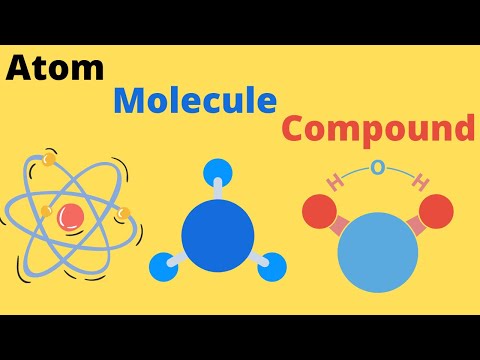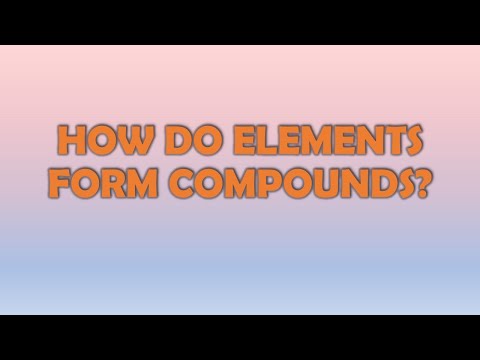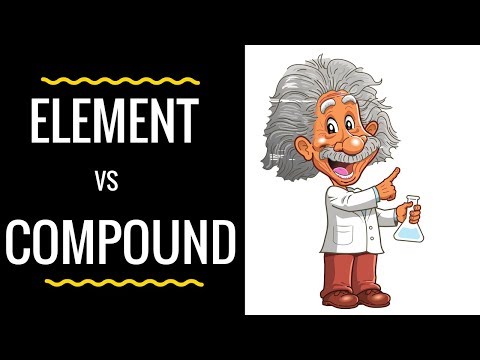Unraveling the Complex World of Finance: What’s a Compound?
The Basics of Compounding: Define Compound Interest in Finance
Alright, let’s dive right into the thick of it: compounding is the fundamental concept in finance that can turn your dime into a dollar, your penny into a pretty penny, you get the drift. But what’s a compound, exactly? According to the gurus over at Investor.gov, compound interest is the interest on both the initial principal and the interest which has been added to this principal. Simply put, it’s like making your money work overtime — and then some!
Imagine you’ve got $1000 in a savings account with a 5% annual compound interest (a dream, I know, bear with me). By the end of year one, you’ve got $1050. But wait, there’s more! In year two, that interest is earning interest and your balance grows to $1102.50, not just another $1050. Over time, this cycle creates a snowball effect, making your account swell better than a rain-soaked sponge!
And how’s that different from simple interest? Well, if this was simple interest (the straightforward cousin of compound), you’d get a flat 5% on the original grand every year — adding up to a yawn-inducing $1000 plus $50 multiplied by the number of years. Yawn indeed.

The Miracle of Compounding in Long-Term Investments
When it comes to long-term investments, like those retirement funds (think 401(k), IRA), compounding isn’t just cool — it’s miraculous. It’s the gas in your investment engine, the wind in your financial sails!
Warren Buffet, the Oracle of Omaha himself, is a prime example of harnessing this power. Starting out with a modest sum, he’s ridden the compound train to billionaire town by playing the long game, letting his investments roll and grow over time.
Data doesn’t lie, folks. Compare two retirement accounts: one with compound interest and one with the simple kind, and over 30 years, the compound account could be double its simple buddy or more, depending on rates and contributions, of course.

5 Insane Compound Facts That Will Transform Your Financial Perspective
The Rule of 72: A Quick Assessment Tool for Compound Investments
Alright, who’s ready for some quick math? No? Don’t worry; I’ve got you covered with the Rule of 72. This nifty trick tells you how long it’ll take for an investment to double, given a fixed annual rate of compound interest. Divide 72 by your interest rate, and presto, you’ve got your doubling time.
Let’s play pretend — say you’ve got an investment that offers a 6% compound return. 72 divided by 6 equals 12, meaning your cash should double in 12 years. Imagine you’re putting that info to use on, say, an S&P 500 index fund. It’s a wait, but it’s a lucrative one!
The Snowball Effect: How Compounding Amplifies Debt
Here’s where compounding can be a party pooper. Credit card debt is like a reverse investment — the longer you let it sit, the more you owe thanks to, you guessed it, compound interest.
Take your standard Visa or MasterCard; if your balance is compounding monthly and you’re only meeting the minimum payments, that debt can grow faster than a weed on steroids. That’s no joke.
But don’t despair! Tackle debt head-on by paying more than the minimum, focusing on high-interest cards first, and consider transferring balances to lower-rate cards if possible. It’s all about staying one step ahead of the compound monster.
Compounding Darwinism: Survival of the Financially Fittest
In the world of personal finance and investing, those who grasp the concept of compounding might just have the evolutionary edge. We’re talking ‘survival of the financially fittest’ here.
Behavioral economists often tell us we humans have a blind spot when it comes to understanding exponential growth like compounding. It’s easy to underestimate what it can mean for our wallets in the long run. But knowledge is power, and awareness is the first step towards building significant wealth.
Tax-Deferred Accounts: The Tacit Compounding Accelerators
Consider tax-deferred accounts your secret weapon in the compounding war. Roth IRAs, Traditional IRAs, and the like let your investment gains roll back into your account, tax-free, until you decide to retire and make withdrawals.
If you’re wondering about the effects of compounding in these tax-sheltered beauties versus the plain old taxable accounts, there’s a stark difference. Using a compound interest formula interest calculator will show that the growth is significantly more robust — we’re talking about your money making money without the pesky bite of the taxman.
Experts like Suze Orman sing the praises of these accounts, urging savvy investors to leverage the system and grow their nest eggs with a tax-deferred boost.
The Eighth Wonder of the World: Compounding’s Effect on the Global Economy
When someone like Albert Einstein reportedly called compounding the “eighth wonder of the world,” you know it’s worth paying attention. And it’s not just personal finance — compounding has its fingers in the global economy pie, too.
Reports from big shots like the World Bank show that emerging markets utilizing compounded investment growth can gain significant ground on the economic playing field. It’s like a silent, relentless wave lifting whole countries higher up the developmental beach.

| Attribute | Description |
| Definition | A compound is a substance formed by the chemical combination of two or more different types of atoms in a fixed ratio. |
| Types of Bonds | Compounds are often bonded together through covalent bonds or ionic bonds, but there are also metallic and other types of bonds. |
| Examples | Water (H2O), Table Salt (NaCl), Carbon Dioxide (CO2), Methane (CH4), Chlorophyll (C55H72O5N4Mg), etc. |
| Key Characteristics | – Pure substance with uniform properties |
| – Have a definite composition; the elements are combined in a fixed proportion by mass | |
| – Can be decomposed into simpler substances (elements) by chemical reactions | |
| Differences from Elements | – Elements contain only one type of atom |
| – Compounds contain two or more different types of atoms | |
| Formation Reaction | Typically involves a chemical reaction where energy is absorbed or released |
| Decomposition Reaction | Compounds can be broken down into their elemental components by chemical reactions, such as electrolysis or thermal decomposition |
Compounding Beyond the Calculator: Real-World Impacts of Elusive Growth
Ecological and Societal Implications of Financial Compounding
Look beyond the balance sheet, and you’ll see the principles of compounding at play in both ecology and society. Smart policy decisions leverage compounding to encourage sustainable practices or to shift societal wealth equitably.
Just like a small environmental change can bring about a significant impact over time, the compound effect can also produce substantial shifts in economic health and social welfare.
Technological Advancements in Comprehending Compounding
Thank heavens for technology that simplifies understanding and management of compounding. We’ve got AI-driven financial tools and apps that help laypeople and pros alike track and optimize their compounding investments.
Remember TurboTax? Well, nowadays, investment tools have become even more advanced, with platforms like Personal Capital offering insights into how compounding works for your specific financial scenario, tweaking the knobs and dials to get it just right.

Conclusion: Embracing the Might of Compound Growth in Your Financial Arsenal
The Inexorable Nature of Compound Interest: A Call to Mindful Investing
Compound interest won’t be ignored, and understanding it can be like wielding financial Excalibur — it gives you the power to rule over your monetary realm.
So don’t just pass the buck to your financial advisor. Get in there, learn the ropes, and wield that compound interest knowledge like a true financial knight.
And remember, folks, compounding isn’t just numbers on a screen — it can be the architect of your destiny. Embrace it, and watch your financial future flourish like a well-tended garden.

Start plotting your course in the wide world of finance with a simple, yet transformational question: What’s a compound? Knowing the answer, and the incredible power behind it, might just be your ticket to financial freedom.
Unraveling the Mysteries: What’s a Compound?
Hey there, mortgage mavens and arithmetic aficionados! Let’s dive headfirst into the mind-boggling world of compounding. If you’re scratching your head wondering, “What’s a compound?”, you’re about to have your mind blown with trivia so wild, you’ll think it’s straight out of a parallel universe.
The Sonic Boom of Compound Interest
Picture this: You’ve got a piggy bank that magically adds more coins based on how many are already in there. That’s the superpower of compound interest—it’s like if your money had its own Nano hearing aids, amplifying every little whisper of interest until it becomes a roaring ocean of cash! It’s not just figures on a ledger; it’s an exponential symphony where each note inspires the next to climb higher and higher.
Love at First Compound
In the heart-throbbing love story of finance, compound interest flirts like Jovi Nicole engbino on the gridiron of your bank account. It’s the financial equivalent of a whirlwind romance, where your initial investment – the suave protagonist – meets a charming little something called “interest, and together, they dance a tango that grows more passionate (read: profitable) with each step.
Once Upon a Compound
Once you’ve wrapped your head around the fairy tale of What Is compounding, consider this – every extra penny added to your savings is like inviting Emilie de Ravin to the ball in your fairytale kingdom of wealth. She doesn’t just make an appearance; she brings along her entire entourage of additional funds, turning your financial narrative into an epic saga of growth and prosperity.
The Rockstars of Compounding
Think of compound interest as the lead vocalist in the band Wallows. Just like their catchy tunes that get better with every listen, each cycle of compounding spins your money into a richer melody. And the best part? You don’t need to be front-row at a concert to feel the good vibes. This band plays exclusively for your portfolio, no backstage pass required.
Gearing Up to Compound
Let’s break it down to something more concrete, like How much down payment For a car. If you’re saving up for that sweet ride, compounding can turbocharge your savings. It’s like putting premium fuel in your economic engine—it won’t just take you from point A to point B; it’ll supercharge your journey to your financial destination.
By now, you’ve likely gained a whole new respect for the wild world of compounding. Remember, it’s not just a math concept sitting in a dusty textbook; it’s a living, breathing strategy ready to multiply your moola! So, embrace these insane facts and let compound interest rock your financial universe! Keep crunching those numbers, and soon you’ll see the jaw-dropping wonders of “what’s a compound” working in your favor.

What is a compound simple definition?
– So you’re curious about what a compound is, huh? Well, in simple terms, a compound is like a team-up of different elements, all chemically bonded to hit their goals together. Imagine them holding hands, figuratively speaking, in a very specific way and ratio that doesn’t change. Oh, and they’re picky too – they only bond in certain fixed ratios!
What is compound and element?
– Alright, pop quiz: Is an element the same as a compound? Nope, not even close! An element is like a solo artist, one type of atom making up the whole gig. But a compound? It’s more like a supergroup, with different atoms from multiple elements coming together to make something new and exciting!
How do you identify a compound?
– Identifying a compound over elements is a bit like spotting a mixed fruit salad among whole fruits. Compounds always have a set recipe, a fixed ratio of different atoms combined. So, you’ll want to look for a substance with two or more types of elements bonded together. Oxygen, nitrogen, chlorine? Those are solo acts, buddy—elements through and through. But water? Now that’s a compound – hydrogen and oxygen in a duet!
What is a compound and example?
– Need an example of a compound? Look no further than your water bottle—H2O, baby! It’s the perfect duo of hydrogen and oxygen, not in a random jam session, but in a solid hit song. Other chart-toppers include table salt (NaCl) and carbon dioxide (CO2). It’s all about those different elements coming together to make something new.
What is a compound simple definition for kids?
– For the kiddos: A compound is like a recipe that mixes different ingredients (which are elements) to cook up a whole new thing! Just like baking a cake needs flour, eggs, and sugar, a compound needs different elements put together in a special way.
What are the 10 examples of elements and compounds?
– Ready for a Top 10 list that’s not music hits but just as cool? Let’s talk elements and compounds. Elements are solo, like gold (Au), oxygen (O), and carbon (C). Hit ’em up with a “Hey, nice single!” Now, compounds are the bands, like water (H2O), carbon dioxide (CO2), and table salt (NaCl). There are tons more, but these are your headliners!
What is element and compound for kids?
– Little scientists, listen up! Elements are like Lego blocks—only one kind, but you can stack ’em up. Compounds? They’re your Lego creations, mixing different blocks together to make something awesome.
Is Air A compound?
– Is air a compound? Well, not really. It’s more like a group of friends hanging out together, but not living together. Air is a mix of different gases like nitrogen, oxygen, and others—more of a mixture than a compound, where elements are truly in a committed relationship.
What are the 3 types of compounds?
– Okay, compounds 101! There are 3 main types: covalent (where atoms share electrons like best friends), ionic (where atoms give and take electrons like swapping snacks), and metallic (where electrons are the shared community property, like toys in a sandbox). Each has its unique style of sticking together.
What are 10 examples of compounds?
– Want more examples of compounds? Imagine a top 10 where water (H2O) is the chart-topper. Following close behind, we’ve got carbon dioxide (CO2), table salt (NaCl), ammonia (NH3), and methane (CH4). The list goes on to hit every genre, from kitchen to chemistry lab!
How does a compound looks like?
– Ever wondered what a compound looks like? Picture a perfectly arranged dollhouse where everything’s set to a specific design. Compounds are like that, with atoms arranged in a precise pattern. No freestyling here; it’s all about order and recipes.



